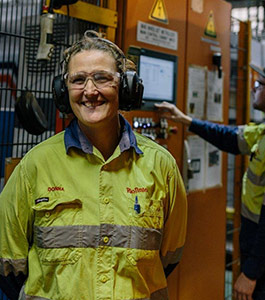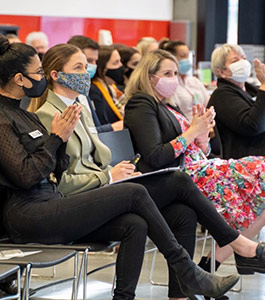It’s about starting from a place of shared values, and understanding that bias is a human condition, rather than a character flaw.
Confronting bias is a tricky thing, On the other hand, by ignoring the problematic nature of a statement (or glossing over it), we are letting unconscious bias go unchecked. Harmless statements and comments pile up to create the many forms of structural discrimination that we see today.
In any situation, confronting bias requires you to start from a place “where most people have the right intentions” but they have not been taught how to approach things inclusively.
Many people often struggle with calling out bias when they are on the receiving end of it. The delicate dance between making a point without causing offense or making the other person defensive is extremely difficult to execute. Added to this is the weight of responsibility of pointing out bias sitting with the person experiencing it – often minorities like women, CALD people or people with disabilities. Ideally, it shouldn’t be the job of minorities and marginalized communities to educate others about their challenges, especially when they face enough additional emotional labour in their day-to-day lives.
CONFRONTING BIAS AT WORK
In most instances, people make biased statements at an unconscious level. When that happens in the workplace, it is important to understand, first and foremost, the kind of workplace culture in place. Is it the kind of workplace where people are comfortable calling out each other’s biases in a respectful way?
Calling out a co-worker compared to a manager can carry different risks, but the same technique can be used. The most important thing is to evaluate the nature of the relationship with a person and identifying what is the ultimate communication outcome.
Coworker Example: You are in a meeting, and someone mentions that a particular woman is aggressive, and you feel the comment is unwarranted and the person is not aware their comment is rooted in gender stereotypes. The appropriate way to respond to that is “with specificity.” Ask them, “What do you think makes her aggressive? What did she say specifically that makes you say that?” This will force the person who made the comment to give specific examples and think beyond stereotypes.
Manager Example: It can be hard to “manage up,” but good managers understand that emotional and psychological safety are two key components to productivity in the workplace. Describing the bias without attacking the person, keeping in mind that bias is a human condition, rather than a personal flaw. Again, asking specific questions can easily unpack their comments without connecting it to their beliefs or bias.
Ultimately, talking about bias and discrimination requires a commitment from both parties to provide a safe space for conversation. Both parties need to adopt the “fail fast” mindset, because, in these conversations, mistakes are inevitable. To move forward, we need to learn to have to “reset conversations so that people aren’t worried about being perceived as biased but instead are focused on where the challenges might be.”
“Fail fast” is the kind of mind-set and effective skill-building that we need to do more of, as opposed to letting resentment about a particular comment build until an unhelpful or even destructive confrontation occurs.





